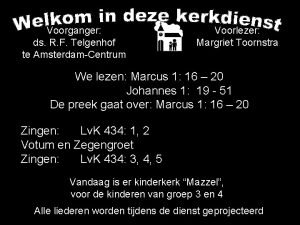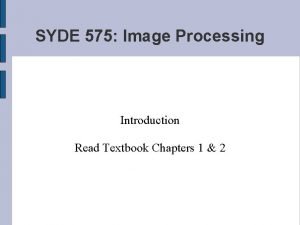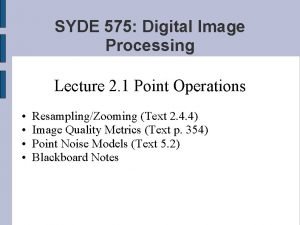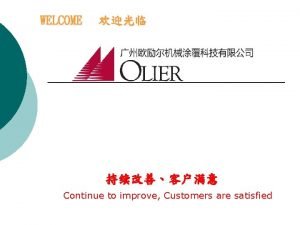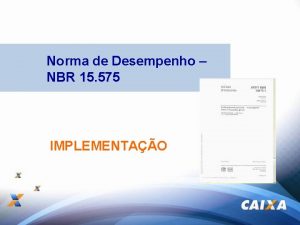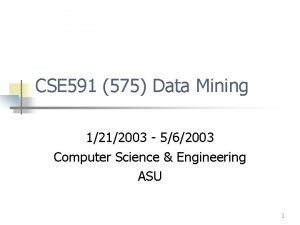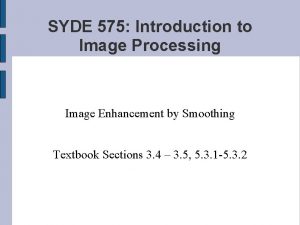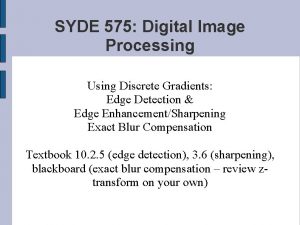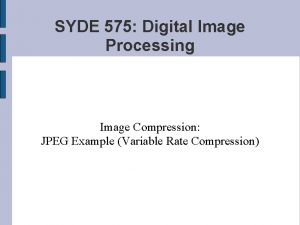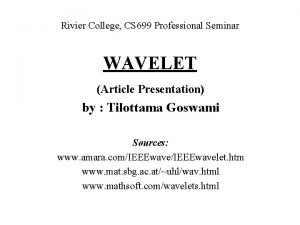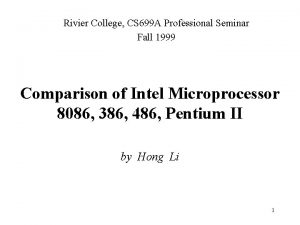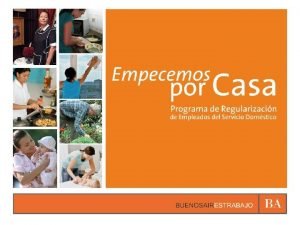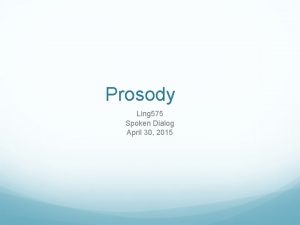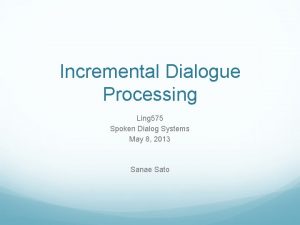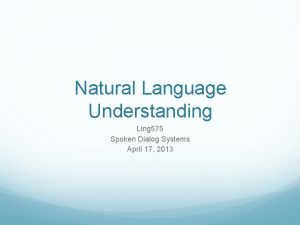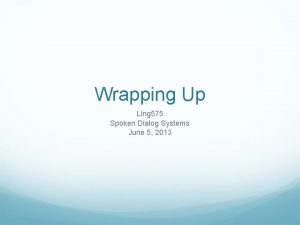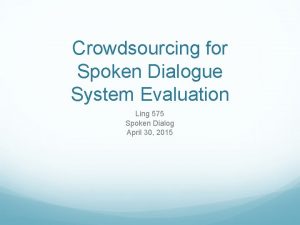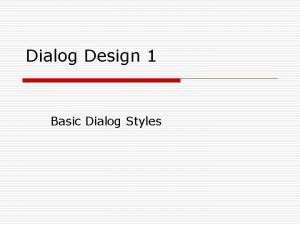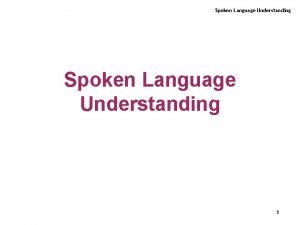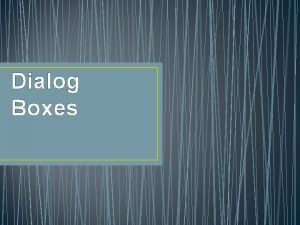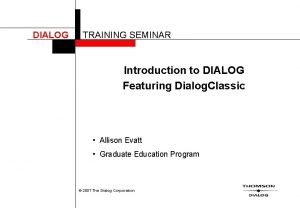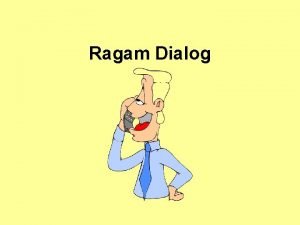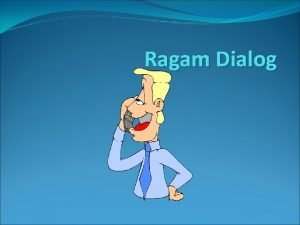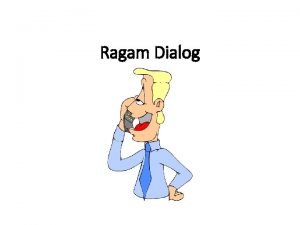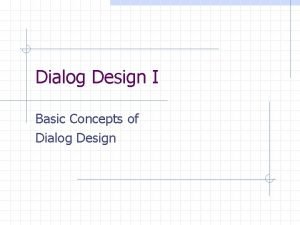Design Evaluation Ling 575 Spoken Dialog Systems April



















- Slides: 19

Design & Evaluation Ling 575 Spoken Dialog Systems April 17, 2013

Designing Dialog Apply user-centered design

Designing Dialog Apply user-centered design Study user and task: How?

Designing Dialog Apply user-centered design Study user and task: How? Interview potential users, record human-human tasks Study how the user interacts with the system

Designing Dialog Apply user-centered design Study user and task: How? Interview potential users, recorded human-human tasks Study how the user interacts with the system But it’s not built yet….

Designing Dialog Apply user-centered design Study user and task: How? Interview potential users, recorded human-human tasks Study how the user interacts with the system But it’s not built yet…. Wizard-of-Oz systems: Simulations User thinks they’re interacting with a system, but it’s driven by a human Prototypes

Designing Dialog Apply user-centered design Study user and task: How? Interview potential users, recorded human-human tasks Study how the user interacts with the system But it’s not built yet…. Wizard-of-Oz systems: Simulations User thinks they’re interacting with a system, but it’s driven by a human Prototypes Iterative redesign: Test system: see how users really react, what problems occur, correct, repeat

SDS Evaluation Goal: Determine overall user satisfaction Highlight systems problems; help tune

SDS Evaluation Goal: Determine overall user satisfaction Highlight systems problems; help tune Classically: Conduct user surveys

SDS Evaluation Goal: Determine overall user satisfaction Highlight systems problems; help tune Classically: Conduct user surveys

SDS Evaluation User evaluation issues:

SDS Evaluation User evaluation issues: Expensive; often unrealistic; hard to get real user to do Create model correlated with human satisfaction Criteria:

SDS Evaluation User evaluation issues: Expensive; often unrealistic; hard to get real user to do Create model correlated with human satisfaction Criteria: Maximize task success Measure task completion: % subgoals; Kappa of frame values Minimize task costs Efficiency costs: time elapsed; # turns; # error correction turns Quality costs: # rejections; # barge-in; concept error rate

PARADISE Model

PARADISE Model Compute user satisfaction with questionnaires Extract task success and costs measures from corresponding dialogs Automatically or manually Perform multiple regression: Assign weights to all factors of contribution to Usat Task success, Concept accuracy key Allows prediction of accuracy on new dialog

Now that we have a success metric Could we use it to help drive learning? In recent work we use this metric to help us learn an optimal policy or strategy for how the conversational agent should behave Speech and Language Processing -- Jurafsky and Martin 1/23/2022 16

A threshold is a humandesigned policy! Could we learn what the right action is Rejection Explicit confirmation Implicit confirmation No confirmation By learning a policy which, given various information about the current state, dynamically chooses the action which maximizes dialogue success Speech and Language Processing -- Jurafsky and Martin 1/23/2022 17

Another strategy decision Open versus directive prompts When to do mixed initiative How we do this optimization? Markov Decision Processes Speech and Language Processing -- Jurafsky and Martin 1/23/2022 18

Summary Spoken Dialogue Systems: Build on existing text-based NLP techniques, but Incorporate dialogue specific factors: Turn-taking, grounding, dialogue acts Affected by computational and modal constraints Recognition errors, processing speed, etc. Speech transience, slowness Becoming more widespread and more flexible


